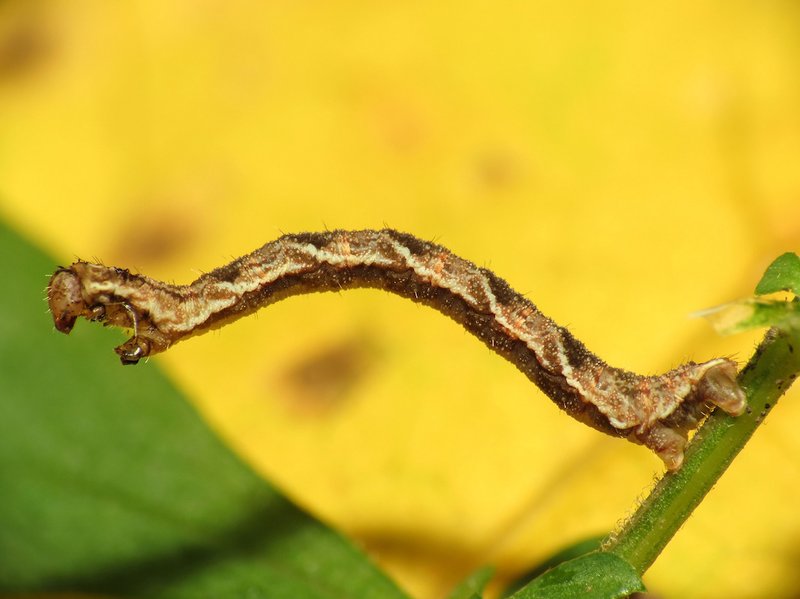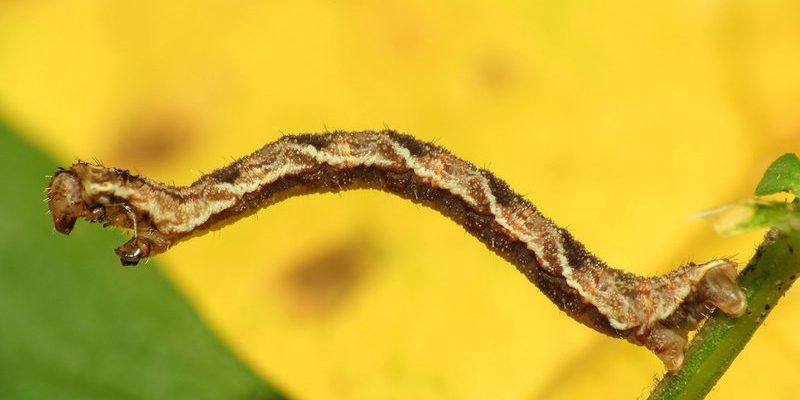
Inchworms, also known as **larvae of geometer moths**, pop up in waves from time to time, and understanding why this happens is like unlocking a puzzle. It’s not just about the change in temperature; a variety of factors play into when and why these critters show up each year. Let’s dive into the world of inchworms, their life cycle, and what kicks off their seasonal dance.
What Are Inchworms?
Inchworms are actually the caterpillar stage of certain moths, primarily from the family Geometridae. “Inchworm” is more of a nickname due to how they move—caterpillars that inch forward by contracting and extending their bodies, creating that unique “measuring” look. You could say they’re nature’s little acrobats.
Typically, these worms are green or brown, allowing them to blend in with their surroundings. This camouflage helps protect them from predators. But here’s the thing: their appearance isn’t just for show. It plays a crucial role in their survival, particularly during outbreaks when their numbers can spike dramatically.
Understanding what an inchworm is sets the stage for why they suddenly appear in large numbers. When conditions are right, they can go from being a tiny presence in the ecosystem to a swarm almost overnight.
Understanding Inchworm Life Cycles
Inchworms have fascinating life cycles that contribute to their seasonal outbreaks. They undergo a process called **complete metamorphosis**, which includes four stages: egg, larva (caterpillar), pupa (chrysalis), and adult moth.
During spring, after a long winter, inchworm eggs hatch. The larvae emerge and start munching on leaves, growing rapidly. This is where the outbreaks come into play. With favorable weather conditions, the population can grow substantially. You might be wondering, “What exactly affects their growth?”
Several factors come into play, including temperature and food availability. Warmer springs with ample rain create excellent conditions for trees and plants to thrive, providing the perfect feast for inchworms. When their food sources are plentiful, their numbers can explode.
Key Triggers for Inchworm Outbreaks
So, what exactly triggers these outbreaks? Several environmental factors are at play.
- Temperature: Warmer spring temperatures lead to quicker hatching and growth rates.
- Humidity: Higher humidity levels often mean better growth conditions for both the inchworms and their food sources.
- Food Availability: A healthy supply of leaves helps increase their population, allowing more larvae to thrive.
These factors create a perfect storm, leading to an explosion of inchworm activity. It’s like throwing a big party when conditions align just right!
The Role of Predators and Parasites
It’s important to remember that inchworms aren’t just at the top of the food chain during their outbreaks. They have their own set of predators and parasites that can influence their populations. Birds, spiders, and even wasps will take advantage of these caterpillars when they are plentiful.
Interestingly, when inchworm populations spike, it can trigger a rise in their natural enemies as well. This can lead to a delicate balance in nature. If the predators manage to catch up, they can help keep the inchworm numbers in check, preventing them from completely overtaking an area.
This predator-prey dynamic is crucial for maintaining ecosystems and ensuring that outbreaks don’t turn disastrous for local vegetation.
Inchworms and Their Impact on Ecosystems
While inchworms may seem like a nuisance during their outbreaks, they play a vital role in their ecosystems. By munching on leaves, they help clean up dead foliage and promote new growth. You might think of them as nature’s pruners, helping to shape the environment around them.
However, too many inchworms can lead to *defoliation*, which occurs when trees lose too many leaves. This can stress plants and make them vulnerable to diseases and pests.
So, while inchworm outbreaks can be spectacular, they’re a double-edged sword. Their presence can signify a healthy ecosystem, but if left unchecked, they can create challenges for the plants we depend on.
How to Manage Inchworm Populations
If you’re a gardener or just someone who loves their greenery, you might be concerned about these seasonal inchworm outbreaks. Thankfully, there are ways to manage their populations without losing your mind or your plants.
1. **Natural Predators:** Encourage birds and other natural predators in your garden. You can set up bird feeders or create natural habitats to attract them.
2. **Manual Removal:** If you spot inchworms early on, you can handpick them off of your plants. It’s a simple method, but it can be effective when done consistently.
3. **Insecticidal Soaps:** There are less harmful sprays available that can help control caterpillar populations while being safe for other beneficial insects.
By employing these strategies, you can find a balance that allows you to enjoy your plants without letting inchworm outbreaks wreak havoc.
Inchworms and their seasonal outbreaks are a dance of nature, influenced by a variety of environmental triggers. Their life cycle, feeding habits, and predator dynamics all intertwine to create a fascinating and sometimes challenging spectacle.
Next time you see inchworms in your yard or park, remember, they’re more than just squiggly larvae. They’re a vital part of the ecosystem, playing important roles in both growth and balance. Whether you’re dealing with an outbreak or simply observing them in their natural habitat, understanding these little crawlers helps us appreciate the complex cycles of life happening right in our own backyards.

